
Already tuesday and the conference is well under way.
The day starts with a talk by Ian Foster...

...about the significance of GRID for the future networking applications.
This is illustrated by simple and self-explanatory figures(!)
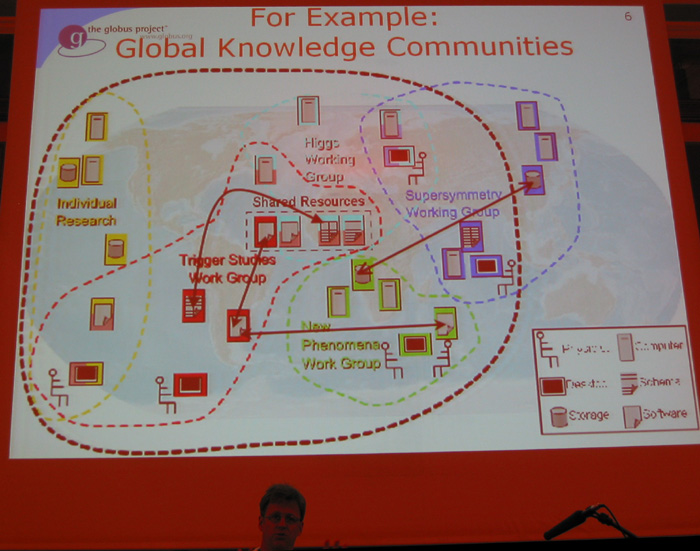
Ian Foster continues to present...

...the easy-to-remember and simple illustrations
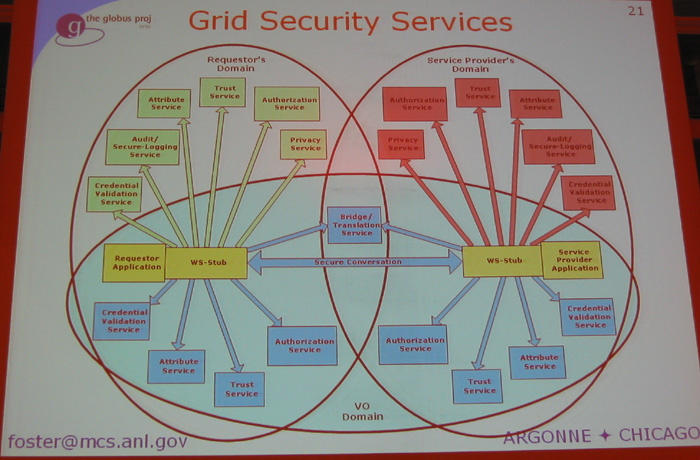
Next speech by
Ken Klingenstein
is about how collaboration technologies can serve useful purposes
in a university context.
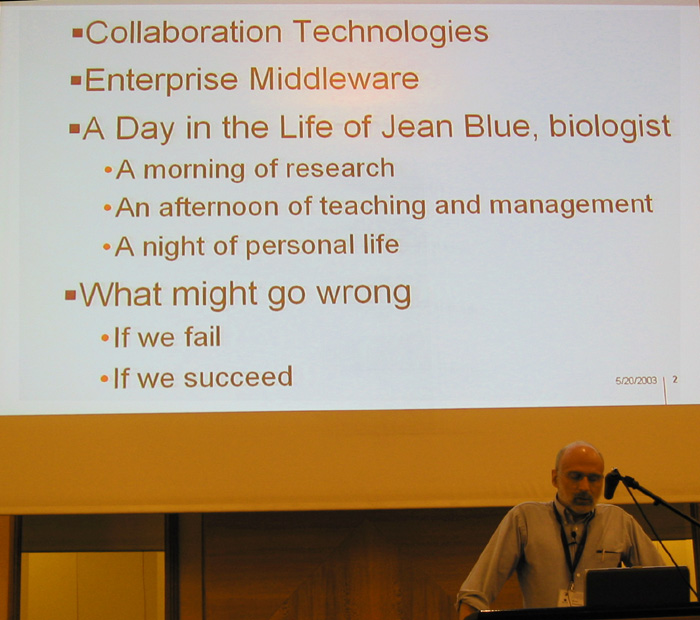
He also has some of these simple figures you have 20 seconds to learn by heart.

A man with a lot of relevant points and a festive closing, having an awkward theme: turtles!
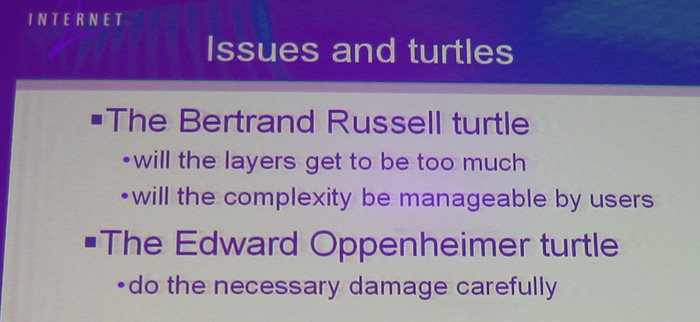
Among the talks in the afternoon is a Cisco guy from Germany by the name of
GŁnther Honisch, who talks about the impact of new aplications on the
network design and technology.
One of his many good remarks was that IP-telephony and video is not really the
key driver for quality of service, but it is rather storage access.
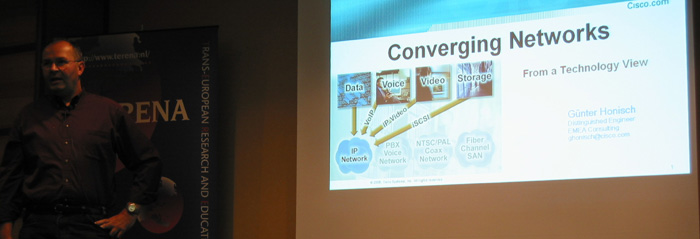
...another point is that it is not only the mere speed and size, but also
the energy density in the equipment that is a limiting factor for how performant
is it possible to make switches and routers. Today's switches are close to the energy density of a nuclear
reactor!

A very interesting project in the field of application-level security is
the Shibboleth project.
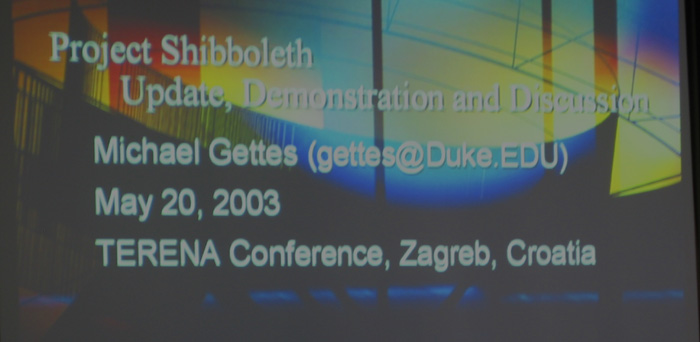
As a very rare thing, the name is not some over-engineered acronym,
but stems from the Bible, where it was the world's first inter-tribal password.

Michael Gettes

Shibboleth explained: First authentification: Who is the user?
WAYF sounds very technical, but only means "Where are you from?"
It is almost too easy!

Then comes authorization: What is the user allowed to do here?
You have better learn this by heart as we will see a lot more of
this method in the coming years!

A Swedish-Norwegian project with an acronym that really can make you
swallow your breathmint by accident!
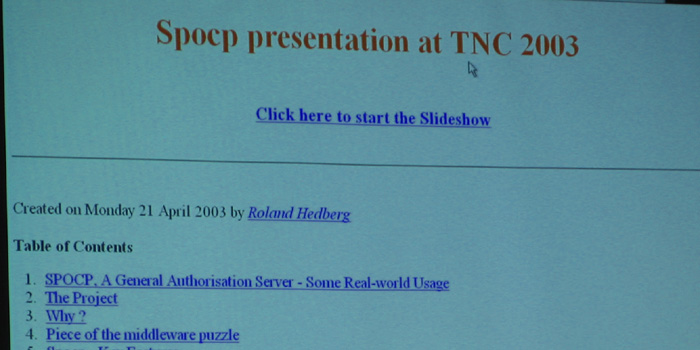
...which Roland Hedberg from Sweden tells about.
It is another way of making authorization of users.

How to produce live newscast if you only have a modem line.
Igor Pandzic from Croatia presented an interesting project about this.

(Still-)images are shown along with text and an animated face, whose movements are
(more or less) synchronized with the sound.

The face is run by an applet that has to be downloaded first and is directed by a
datastream (that nearly fills nothing) which is sent concurrently with the sound.
This datastream is in fact a part of the MPEG-4 standard. Amazing what those
guys care to standardize...

Have you ever dreamt of remote-controlling a fusion reactor?
It takes more than a joystick!

Jesus Vega from Spain outlines the enourmous infrastructure needed.

Evening - the hotel corridor is quiet again after another busy day.

Martin Bech